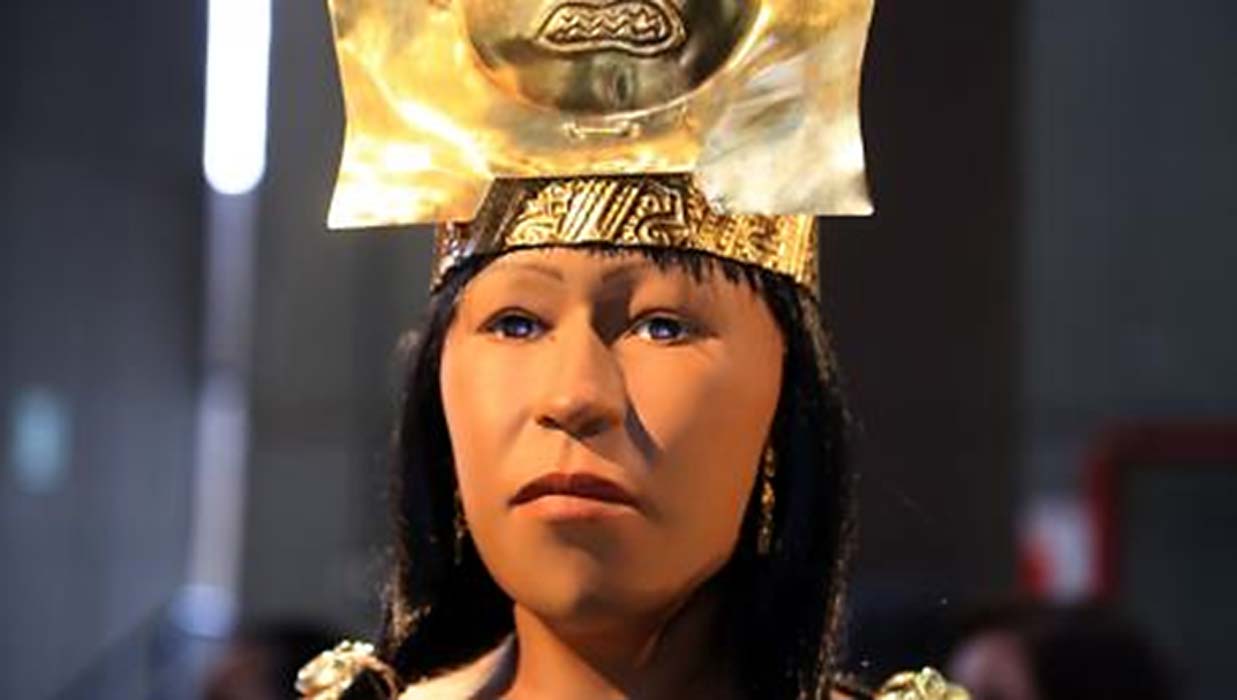Women Ruled the Ancient Peruvian World, New Research Shows
A historian has come forward with the assertion that sexism has tainted popular understanding of the lives of pre-Hispanic Peruvian women. Specifically, she has documented how high-ranking women have been labeled as priestesses with no political power, despite the evidence showing a different story.
According to Daily Mail, historian Maritza Villavicencio has researched the body art, burial rituals, and clothing used by ancient Peruvians for the last 10 years. The results of her labor are the book, “Mujer, poder y alimentacion en el antiguo Peru” (“Woman, power and food in ancient Peru.”) Her time frame of interest was the pre-Hispanic period, running all the way from 9500 BC to around 1500 AD.

This royal tomb, the eighth discovered in 25 years, is said to have belonged to a Moche priestess buried 1,200 years ago. The great quantity of artifacts and the complexity of the burial reveal the power and influence this woman wielded in life. (Luis Castillo)
As Inquirer reports, Ms. Villavicencio has found the belief of elite ancient Peruvian women not having political influence and only rising to the level of priestesses is false. She asserts that there were ancient female monarchs. Villavicencio said,
“Women were invisible in history, and what my book does is propose restoring the memory of the real life of these women. That’s why this more than just a claim […] Women were categorized as priestesses to lower their status — not as a person who had power to participate in their people’s political, economic and social activities, able to decide and make alliances with make rulers […] There is a discriminatory interpretation by researchers regarding women in ancient Peru which obscures the power of these women.”
- Tomb of the Tattooed Sorceress Queen, The Lady of Cao
- Ancient Peruvian Queen Mummy and her Sacrifice Victims to Undergo DNA Analysis

Representation of a Moche priestess. ( cinabrio blog )
Evidence for women’s political power having existed in pre-Hispanic Peru is evident if one follows Villavicencio’s explanation of what gave people power back then. She says there are four main areas which created authority: the ability to work ‘miracles’, reproduction, providing food, and skills at making textiles. A woman could have excelled in any of these areas as well as a man could. Thus, Villavicencio asserts that women’s “power to heal, to summon the weather through knowledge, to show the path of life and death made them leaders.” Lineage also played a role in who took control.
Archaeological sites such as the San Isidro site of Huallamarca provide a good example of burials of elite women. When it was excavated in 1958, the remains of 100 people were found – 73 were high ranking women such as the Lady of the Long Hair (la Dama de los Cabellos Largos). Grave goods suggest that the men buried at the site were of lower rank than their female counterparts.

Huallamarca, San Isidro, Lima, Peru. (Håkan Svensson/CC BY SA 3.0)
Textile making has also been linked to the remains of some pre-Hispanic women found in Peru and Villavicencio says that these gave women power. Tattoos of powerful symbols such as serpents have been found on the bodies of some women too.
Villavicencio cites examples such as the Lady of Cao and the Señora (Lady) of Chornancap to show how archaeological facts have been distorted by many scholars.

Reconstruction of the ‘Lady of Cao’, a Moche ruler. (Manuel González Olaechea/CC BY SA 3.0)
The Lady of Cao, now mostly acknowledged as a ruler, was initially said to have been a priestess – despite having been buried with a scepter much like the one found in the tomb of the Lord of Sipan (who was considered a political leader almost without question).
The Lady of Cao was a Moche political leader who governed in the 4th century. Her remains were found at the Huaca Cao Viejo pyramid in 2006. She was buried with a crown and copper and gold artifacts. Villavicencio says, “the Lady of Cao had serpents tattooed on her arm, which signified she able to summon water from the rivers and possibly predict the weather.”
- Lady of Cao Comes to Life: Face of Peruvian Priestess Reconstructed from 1,700-Year-Old Mummy
- Ten Powerful and Fearsome Women of the Ancient World

Tattoos on the arm of the Lady of Cao. (Mujeres Aborigenes: Mayas y Mochicas)
It took time, but eventually it was decided upon further examination that the Lady of Cao was a political leader. Today there is a museum honoring her.
The Lady of Chornancap may provide another example of historical misunderstanding. Her remains were found in San Jose del Moro in northern Peru in 1992. She lived there in the Late Sican period, between the 12th and 14th centuries, and was buried with typical clothes for a leader, eight women who were sacrificed to join her in the afterlife, and a headdress. The evidence suggests more, but Villavicencio says most historians have called her a priestess.

Reconstruction of the Lady of Chornancap. (Fotos e Imágenes del Perú)
Villavicencio explained, “There is a biased view when it comes to women, a male-centric vision that puts men at the center of everything in Peru's history.” Many Peruvian history books still suggest women didn’t hold governing roles. Perhaps it would be a good idea to make parts of Villavicencio’s book a required reading for Peruvian history students – at least to give them an alternative perspective on the past.
Top Image: Reconstructed face of the Lady of Cao, a Pre-Hispanic Peruvian female ruler. Source: Ministerio de Cultura de Perú



















